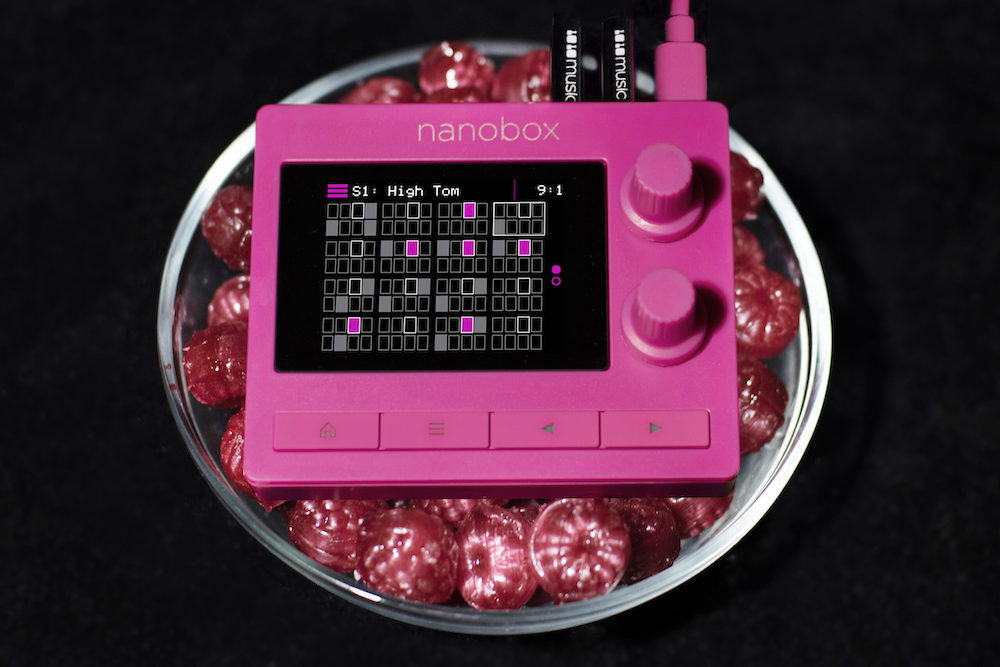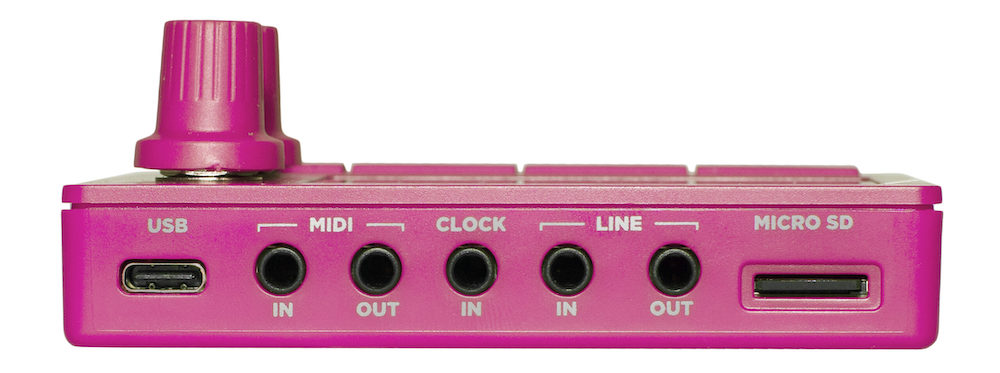1010’s latest portable instrument combines sampling power and FM synthesis to great effect.

Historically, the groovebox market has been dominated by a few major players, with models like the Akai MPCs, Korg Electribes and Roland SP series winning loyal cult followings. In recent years, boutique manufacturers have got in on the act, with options like the Erica Synths Bassline DB-01, Twisted Electrons BlastBeats and Polyend Tracker offering radically different takes on the basic idea of an instrument with built-in sequencer.
1010 Music’s Nanobox series, which made its debut earlier this year, offers a unique twist on the traditional groovebox concept. Each of the Nanobox models offers a different digital sound engine packaged into a tiny format with touchscreen controls. The 1010 Music Razzmatazz is the latest in the range, specialising in drums and based around a combination of samples and FM synthesis. On paper, the Razzmatazz might do broadly similar things to something like an Akai MPC, but in practice it feels very different and offers a few unique features which make it suited to a different type of creative process.
The Razzmatazz follows exactly the same basic formula that we saw with the other Nanobox models, the Lemondrop granular synth and Fireball wavetable synth. It’s a tiny standalone box with the front panel dominated by a 2.5-inch multi-touch screen. Round the back, there’s a microSD card slot for storage, sample transfer and firmware updates, a USB-C slot for power and five 3.5mm sockets: MIDI in and out (via TRS-to-DIN adapters), analogue clock in, and stereo audio in and out. The instrument itself is built around a powerful sequencer, with up to eight sounds per sequence, real-time mixing and effects, the option to perform and record patterns via the on-screen pads or to program and edit via a step editor.

Sonically, there are two aspects to the Razzmatazz which contribute to its versatility, the sample capability and the FM synth options. Settings are selected for each pad via the Pad Model option, in which you can select starting points for your sounds. Six instrument models are available for all pads: Kick, Snare, Closed Hat, Open Hat, Tom and Sample. Two more advanced WAV playback options are also available for the first pad slot, Clip and Slicer, allowing you to load up longer audio samples. Clip mode allows you to synchronise audio loops with your beats, while Slicer mode chops a sample and allows you to play back either a single slice, consecutive slices with each trigger, or random slices. What quickly becomes apparent is that there’s not only plenty of depth to the Razzmatazz’s capabilities, but also that there’s a distinctive character thanks to the FM engine; the grittiness of the drum synth engine lends itself to techno, electro and D&B, while cleaner sounds are easier to achieve via samples. Effects are relatively limited, with separate delay and reverb models doing the heavy lifting, but the cabinet distortion ties into the dirtiness of the FM engine nicely.

We already know from the other Nanoboxes that 1010 have created a very solid hardware platform, not just in terms of stability and depth of features but in terms of connectivity. The Razzmatazz can accept an analogue clock source to sync with other devices, but it can also be controlled over MIDI using the included TRS-to-DIN adapter. The level of MIDI control is extensive and you can also map CC settings to Razzmatazz features using the MIDI Learn option, but the main benefit of hooking up via MIDI is that you can use a pad controller to access velocity and pressure, which for obvious reasons can’t be controlled via the touchscreen. Only one TRS-to-DIN adapter is provided in the box, but you can purchase an additional one for under £6, allowing you to pass MIDI through to other devices further down the chain.

1010 strike a good balance between portability and features with the Nanoboxes. The lack of an internal battery means you’ll need a source of power but there’s no reason you can’t run on any standard USB power pack. The stereo line out is more than capable of driving headphones, meaning you can make music anywhere. MIDI and even audio over USB would be a nice addition in theory, but their absence here is almost certainly down to the Nanoboxes’ compact dimensions. Nevertheless, the Razzmatazz packs a huge amount of features into a small box. There’s genuine depth to the sequencing options as well as the sound design capabilities of this little unit. It’s interesting that the Nanoboxes lend themselves so effectively to the demands of live performance; they work nicely as part of a compact studio setup or a tool to sketch out ideas while on the move, but the portability and surprising power of the Nanos really shines when you think of combining them as part of a live rig, perhaps with 1010’s almost-equally compact Bluebox digital mixer.

The Nanobox series has carved out a unique niche for 1010 Music, offering arguably the most power you can find in any ultra-compact grooveboxes. If you don’t need something quite as compact, there are plenty of other samplers and drum machine options to choose from around a similar price point, including Roland’s SP-404MKII and the more synth-focussed Erica Synths/Sonic Potions LXR-02. However, the Razzmatazz offers far more portability than either, plus it’s got its own distinct character. If you want something tiny but powerful to sequence drums, samples and FM sounds, look no further.
More info/buy